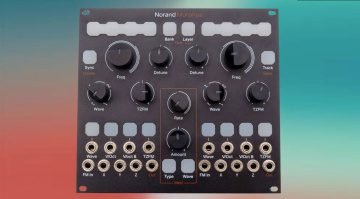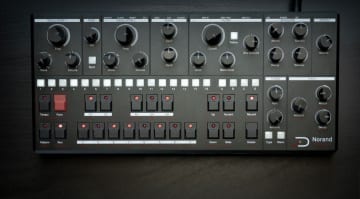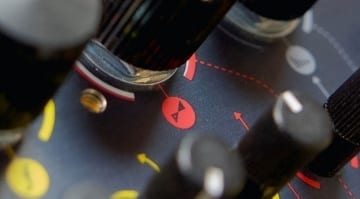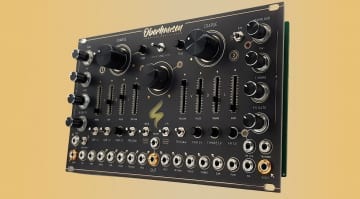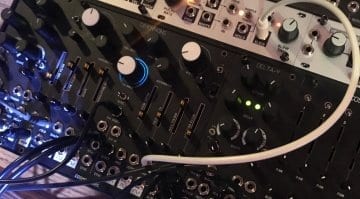Norand Morphos: 3D morphing complex oscillator
The Morphos from Norand has a new spin on the complex oscillator by building in contextual and tactile morphological modulations.
Norand Morphos
The Morphos unexpectedly has presets. On the whole, presets are not something you often find in Eurorack oscillators. While you may find different waveforms, algorithms, or forms of synthesis you’ll rarely find actual presets that capture the knob positions of analogue oscillators as a snapshot. But what makes these presets extra special is that you can morph between them using a touch-sensitive strip.
Two analogue oscillators, used in combination, find cross-modulation within the Morphos. Each oscillator has a touch-sensitive strip of FSR sensors to detect position and pressure. And so each strip can address 4 presets and using your finger you can morph from one preset to an adjacent one. However, there are 3 layers, XY & Z, that give us the 3D element. By sliding vertically you can morph between layers from an X preset to a Y preset, or by applying pressure you can access the Z layer. There are 4 banks of 3 layers of 4 presets giving 48 per oscillator. That sounds like a lot of hard work to me!
You are currently viewing a placeholder content from YouTube. To access the actual content, click the button below. Please note that doing so will share data with third-party providers.
Modulation
In terms of contextual modulation it is possible to modulate every parameter through 3 different selectable modes: Attenuverter, Modulator and Ping Envelope. Firstly with Attenuverter mode the knob controls the amount of modulation CV patched into the input. Secondly, in Modulator Mode, you can work in an internal LFO. Finally, in Ping Envelope mode, the input expects a trigger that will generate an internal envelope.
For microtonal possibilities, the usual 1v/oct input expands and contracts to cover up to 4 volts per octave and down to a quarter volt per octave.
Stable oscillations
We’re not done with the oscillators yet. Additionally, the two VCOs are all-analogue, digitally controlled, with analogue Through Zero Frequency Modulation (TZFM). Also, the waveforms are continuously variable and have hard sync. They are identical and detunable and sources for each other’s modulation that’s distinct from the modulation section in the middle.
More oscillator for your money
Norand has wired together an interesting array of features and possibilities in this complex oscillator. Where most combination oscillators focus on the cross-modulation the Morphos brings in alternative modes to mess with all aspects of the module. This brings out different tones and massively widens the range. The morphing aspect is certainly interesting, although my experience with FSR strips is that they take a bit of work. How much morphing will I want to be doing, and wouldn’t it be easier just to turn a knob? However, it does give you another approach to modulation and an innovative way to move between sounds.
Morphos is available now for a special price of €320.

 5,0 / 5,0 |
5,0 / 5,0 | 

